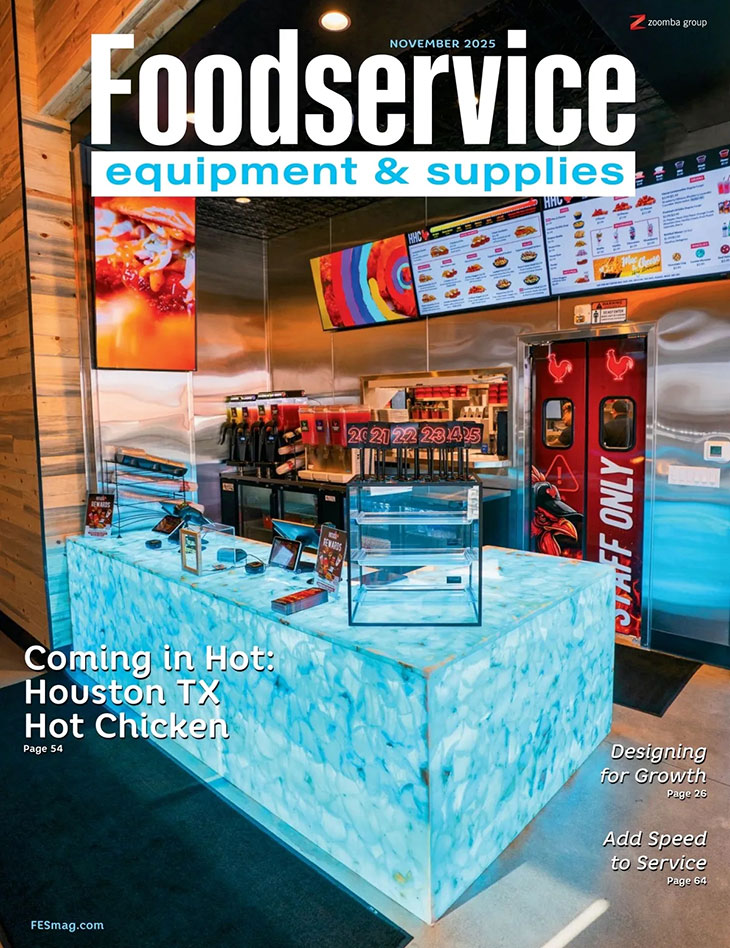While at first it may seem daunting from a labor perspective, it is possible to cater to consumers' needs around the clock through careful plan development and equipment selection, as these non-commercial operators have shown.
Uneven performance, unit remodels, mergers and acquisitions and healthy eating are all among the factors that will continue to shape the performance of the foodservice industry in 2012.
Here is the story about how Lettuce Entertain You Enterprises, a multi unit operator, renovated its iconic French restaurant in Chicago to create a hipper and more updated location with strong ties to its culinary roots.
A guest will visit a restaurant for the first time either by choice or by chance. But any subsequent visits are all by choice. That's why, when trying to earn repeat business, which is so important to all of us, no detail is too small for us to overlook. And we choose to partner with vendors that share this philosophy.
Six easy steps to ensure a productive service life for a microwave.
Identifying new and talented leaders is essential for the survival of most any industry and foodservice is no exception. Each segment of the foodservice industry needs to continue to attract and cultivate new leaders and encourage new ideas so the community can collectively evolve in its pursuit to satisfy consumers' ever-changing dining habits.
A former service agent shares a some tips on how to evaluate foodservice equipment in the aftermath of a flood.
To reuse or dispose? That is the proverbial and, in some cases, literal million-dollar question for foodservice operators, from the smallest quick-serve restaurant to the highest volume K-12 or college cafeteria.
Even though it has been six years since Hurricane Katrina hit New Orleans, the region continues to deal with the devastation and is still in the midst of rebuilding efforts. After its 52,000-sq.ft. cook-chill facility was left completely underwater due to the epic storm, Sheriff Marlin Gusman of the Orleans Parish Sheriff's Office took temporary action to keep his operation running.
In the grand scheme of commercial kitchen energy use, convection ovens don't pose a huge drain on costs compared to refrigeration or even fryers. But that doesn't mean their impact on total kitchen energy use is negligible. In fact, the Food Service Technology Center is diligently working to revise standards for ovens, including rack, conveyor and combination units.
When foodservice professionals discuss waste management, the conversation generally turns to composting, recycling, and donating excess food — anything that happens after the food has been wasted. But what about preventing the waste from occurring in the first place?
With the challenging business environment making capital improvements harder to come by, foodservice operators from all segments are learning to make the most of their existing resources.
Housed in two buildings, the 829-bed Hennepin County Adult Detention Center, operated by the Hennepin County Sheriff's Office, is the largest pretrial facility in Minnesota. Each year, the Sheriff's Office books approximately 40,000 inmates. Commonly referred to as the Hennepin County Jail, the facility is one of only two in the state to utilize cook-chill production. The production kitchen opened in 2001.
A sharp contrast to sleek coffeehouses with high-end finishes, the ambiance of Actual Café in Oakland, Calif., mirrors its diverse, urban surroundings.
Factors such as unskilled labor and shrinking budgets are not handcuffing these foodservice operators as they leverage easy-to-use equipment to serve large volumes of food on a daily basis.
"Limited service beverage" is becoming a misnomer as many operators in this segment continue to expand their menus to include sandwiches, salad and other more substantial food items. Lower purchase points for many menu items have helped a number of these operations successfully weather the turbulent economy.



